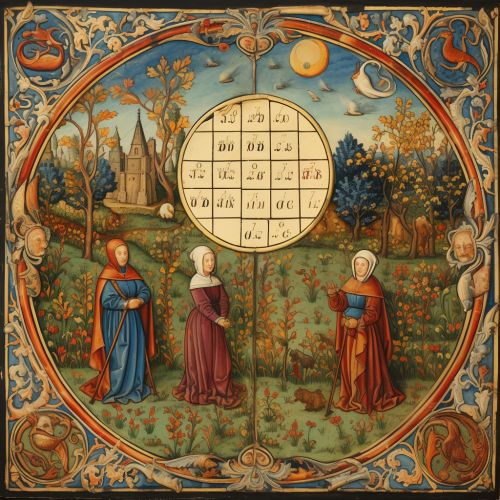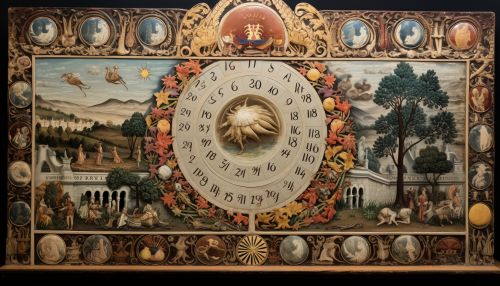Gregorian calendar
Introduction
The Gregorian calendar, also known as the Western or Christian calendar, is the most widely used calendar system today. It was introduced by Pope Gregory XIII in 1582, as a reform of the Julian calendar, and has 365.2425 days in a year, divided into 12 months.


History
The Gregorian calendar was introduced by Pope Gregory XIII in 1582, following a decree known as Inter gravissimas. This was done in response to the drift in the Julian calendar, which was causing the spring equinox to occur earlier each year, disrupting the timing of Easter, a significant event in the Christian liturgical year.
Predecessor: The Julian Calendar
The Julian calendar, introduced by Julius Caesar in 46 BC, was the predecessor to the Gregorian calendar. It was based on a solar year, with a leap year every four years. However, this system overestimated the length of the solar year by 11 minutes and 14 seconds, leading to a drift of about three days every 400 years.
Reform and Introduction
The reform to the Julian calendar was proposed by the Calabrian doctor Aloysius Lilius, and was decreed by Pope Gregory XIII on 24 February 1582. The new system adjusted the length of the year and introduced a new method for determining the date of Easter. It also included the removal of 10 days from the calendar to realign the spring equinox with March 21.
Structure
The Gregorian calendar is a solar calendar based on a 365-day common year divided into 12 months of irregular lengths. Eleven of these months have either 30 or 31 days, while the twelfth month, February, has only 28 days during the common year.
Leap Years
A leap year in the Gregorian calendar has 366 days, as opposed to a common year which has 365. Leap years occur every four years, in years evenly divisible by four, with the exception of end-of-century years which must be divisible by 400. This means that the year 2000 was a leap year, although the years 1700, 1800, and 1900 were not.
Months
The Gregorian calendar consists of 12 months: January, February, March, April, May, June, July, August, September, October, November, and December. Each month has a fixed number of days, ranging from 28 to 31.
Adoption
The adoption of the Gregorian calendar was a gradual process that took place over several centuries. The Catholic countries of Italy, Poland, Portugal, and Spain were among the first to adopt the new system in 1582. Other countries, particularly those in Protestant and Orthodox regions, adopted the calendar much later.
Accuracy
The Gregorian calendar improves upon the Julian by removing three leap years every 400 years, making the year on average 365.2425 days long. This is very close to the actual solar year length of approximately 365.2422 days, making the Gregorian calendar one of the most accurate calendar systems in use.
Impact and Usage
Today, the Gregorian calendar is the de facto international standard for civil use. In addition, it is used by the Roman Catholic Church and Protestant denominations for liturgical purposes. The calendar has also influenced and been adopted by other calendar systems, such as the reformed Islamic calendar and the Chinese calendar.
